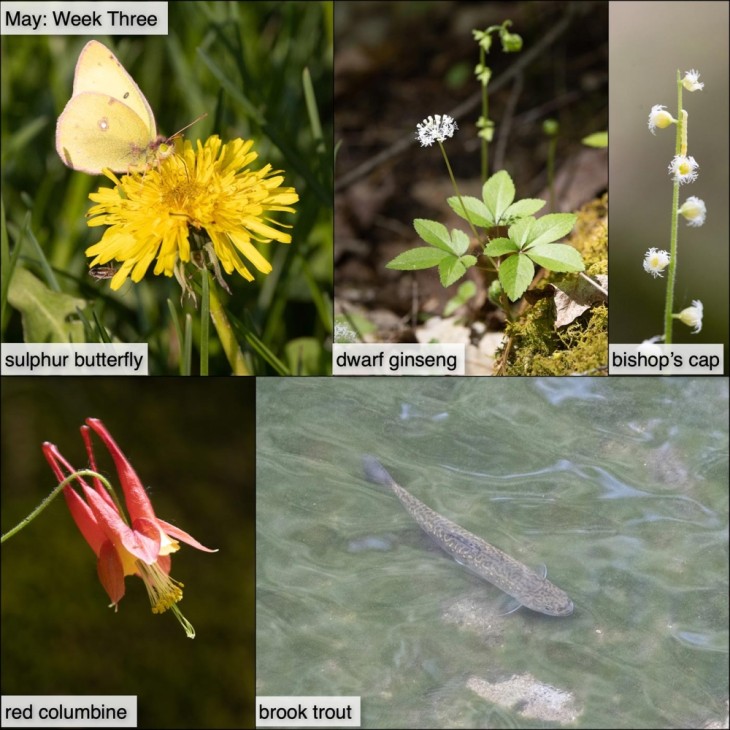This week in the woods and fields, we’ve been chasing tiny butterflies. There are two very similar looking species of yellow sulphur butterflies in the air right now, orange sulphurs and clouded sulphurs, but their appearance varies by individual insect and they almost never stay still long enough, or let you get close enough, for a careful inspection. So for practical purposes, it’s probably best just call it a sulphur butterfly, and move on to congratulating yourself that you left dandelions, violets, wild strawberries and other pollinator-pleasing spring flowers blooming in your lawn. Notice the buttefly’s funky lime green eyes and its extended proboscis, which the butterfly is using to suck nectar from the dandelion’s center.
Sulphur butterflies arrive early in the growing season and stay late; if the weather cooperates, there will still be a summer-hatched generation fluttering around the goldenrod in late September.
The forest wildflower show continues. Dwarf ginseng is now producing white umbels on stalks above whorls of three or five leaves, and bishop’s cap, a.k.a. twoleaf miterwort, is also in bloom. Its flowers are so itty bitty (about .3 cm wide) that you’ll likely need magnification to see the feathery petals. They’re worth the extra effort – bishop’s cap flowers really are some of the most exquisite spring blooms. Notice, too, the lemon-colored caterpillar in the macro photograph, presumably some sort of moth larvae.
A third unusual-looking flower that’s much easier to inspect, is red columbine. The plant’s nectar is stored deep within the tubular structures of the flowers. Only a few insects – including long-tongued sphinx moths – can access the nectar through the flower opening (although some beetles cheat by biting through). Other important pollinators of red columbine are ruby-throated hummingbirds. The birds are no doubt attracted by the flowers’ bright red-and-yellow coloring and its super-sugary nectar (according to the USDA Forest service, red columbine nectar has twice the sugar content as that of other columbine species.)
Finally, a few days ago, we were excited to catch a glimpse of young native brook trout. This is a good time to see trout and other cold-water loving fish, because despite the recent warm weather, the water remains very chilly, and the fish are more comfortable than they will be later in summer, feeding on insects and other small invertebrates in the sunny shallows. Here’s a photo essay about the brook trout’s life cycle, from the Autumn 2014 issue of Northern Woodlands magazine.
What have you noticed in the woods this week? Submit a recent photo for possible inclusion in our monthly online Reader Photo Gallery.


